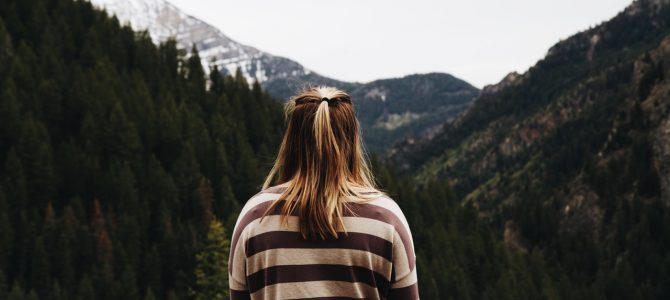
Recently some city slicker from the coast made the mistake of tweeting a picture of flyover farmland and pondering how the rectangles of subtly shifting verdant colors could possibly have occurred. He was Twitter mobbed, not in a vicious way, but certainly mocked for essentially not knowing what a farm is.
I’m going to make a confession. I have also stared out the oval window, amazed that America really does look like a 1970s carpet. I too have wondered how it could look so perfectly aligned. Like crop circles, it seemed unnatural. Of course, that’s because it is. In a car, on a train, or on foot, the green and yellow changes slowly. It feels like nature. Only from above do we see how manufactured it was.
Almost three years ago, for the first time in 30 years I moved into an apartment with a backyard. Now, when I say backyard, it’s a 30-foot, by 30-foot postage stamp in the double-blind alley between Brooklyn blocks. But there are trees. I grew tomatoes this year in my rented patch of dirt. For guys like me who don’t know what a farm is, this is pretty much nature.
I had outdoor space one other time, for nine years on the Lower East Side. It was a shared roof deck, and it offered unparalleled views of nearly the entire Manhattan skyline. The night of the blackout, everyone went up there and we watched Gotham disappear into a dark cloak spectacled with generators. But that view never told you much about the time, or seasons. Short of snow, it mostly looked the same year round.
My backyard — stop laughing — is the opposite. If you just dropped me here randomly in time, I could probably nail what month it was just from the dirt, plants, and trees. But watching that happen, slowly, day by day, this is new for me. And on some level it changes the very basis of how I think about time.
In his book, ‘The Logic of Sense,’ philosopher Gilles DeLeuze has this to say about time. “Here we rediscover the opposition between Aion and Chronos. Chronos is the present which alone exists. It makes of the past and future its two oriented dimensions, so that one goes always from past to future-but only to the degree that presents follow one another inside partial worlds or partial systems. Aion is the past-future, which is an infinite subdivision of the abstract moment [that] endlessly decomposes itself in both directions at once and forever sidesteps the present.”
My backyard sidesteps the present. This is entirely unlike the roof deck, where the rooftop morning smoke showed me the Chronos of the ever present, and yes, today is like yesterday and tomorrow will be like today. But now, in Brooklyn and the clicking of clocks, I saw a cardinal in the tree today. I think it was a cardinal, at least — it was red and had that fauxhawk thing. I hadn’t seen one in a long time. My tomato plants look like Pompeii victims after last night’s first frost. There is change.
A lot of technology is built around the creation of an existence that defies time. The light bulb, and modern medicine, even the alarm clock, do. Time is an obstacle. Nature, whether a heavily and obviously manmade Brooklyn backyard, or a more lightly and subtly ensconced Kansas farm, is oblivious to such innovations. It is nature, no matter how much we try to escape it, that describes time, no matter which way we experience it at any given moment.
I know these will sound like simpleton, naïve observations to anyone who hasn’t led a life as sheltered by concrete and glass as I have. But they are nonetheless good faith revelations, and my experience is not unique. And tackling the problem is not a new idea.
In the mid 19th century, New York City went on a park-building spree. The two most famous are Manhattan’s Central Park and Brooklyn’s Prospect Park. Both use the Picturesque Style of landscaping, which values natural-looking vistas over the overly planned gardens of 18th-century Europe. The idea was always that the city is stifling and its citizens need nature. We still do.
I don’t think Frederick Law Olmsted was thinking along the lines of Gilles DeLeuze when he designed Central Park. But I do wonder if he thought about how, along with offering New Yorkers somewhat fresh air and a haven from the sun-starved caverns of Manhattan, he was in some sense also giving them time. To this day, a few hundred yards into Central Park the tension of right now drifts away.
My backyard is a far cry from Central Park, but for the first time in my adult life I spend a lot of time outside, not just working but also just living. And time, the master of us all, well, it seems like a more magnanimous ruler back there. I feel like I’m in on its joke, and it is in on mine.









